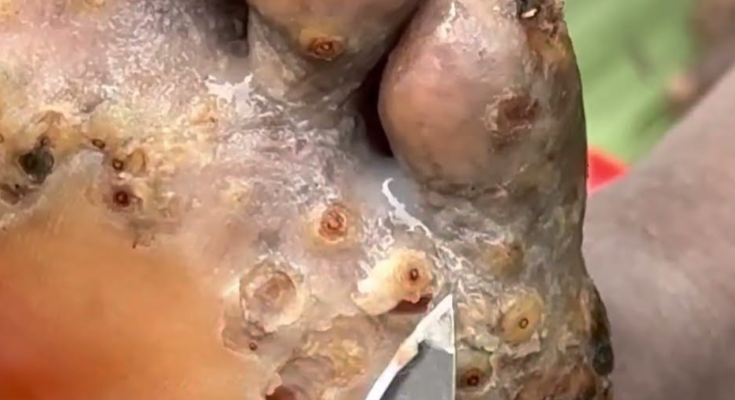Jigger digging refers to the process of removing jiggers (also known as sand fleas) that have burrowed into the skin, typically on the feet. Jiggers are tiny parasitic fleas that infest sandy soil and can latch onto human skin, particularly in rural or impoverished areas where people often walk barefoot. The fleas burrow into the skin, causing painful swelling and infections, and can lead to more severe health issues if left untreated.
The process of jigger digging typically involves the following steps:
Identification of the Jigger: The first step is identifying the areas on the feet (usually the toes and soles) where the jiggers have burrowed. These areas may appear swollen, red, or inflamed, and the person may experience itching or pain.
Cleaning: The feet are usually cleaned thoroughly with soap and water, sometimes using antiseptics, to reduce the risk of infection.
Digging Out the Jiggers: A person skilled in the practice (sometimes a family member or a local healer) will use a sharp tool, often a needle, pin, or small knife, to carefully dig out the jigger from the skin. The process is delicate, as the flea is deeply embedded in the skin.
Removal and Cleaning: After the jigger is removed, the area is cleaned again to ensure no infection remains. Sometimes, the removed jigger is examined to ensure it was fully extracted.
Treating the Wound: The wound is often treated with antiseptic or ointments to prevent infection. In some cases, the person may be given antibiotics or painkillers if there’s an infection or swelling.
Aftercare: The individual may be advised to keep the foot clean and avoid further exposure to jiggers, such as wearing shoes or using a different method of walking to prevent re-infestation.
While jigger digging can relieve the immediate discomfort, it is not always a guaranteed solution to the underlying problem. Recurrent infestations may occur if the environmental factors, such as walking barefoot in infested areas, are not addressed. Proper hygiene, footwear, and public health measures can help prevent jigger infestations.
It is important to note that jigger infestations are a sign of poor living conditions and limited access to healthcare, which is why they are most common in impoverished regions.


